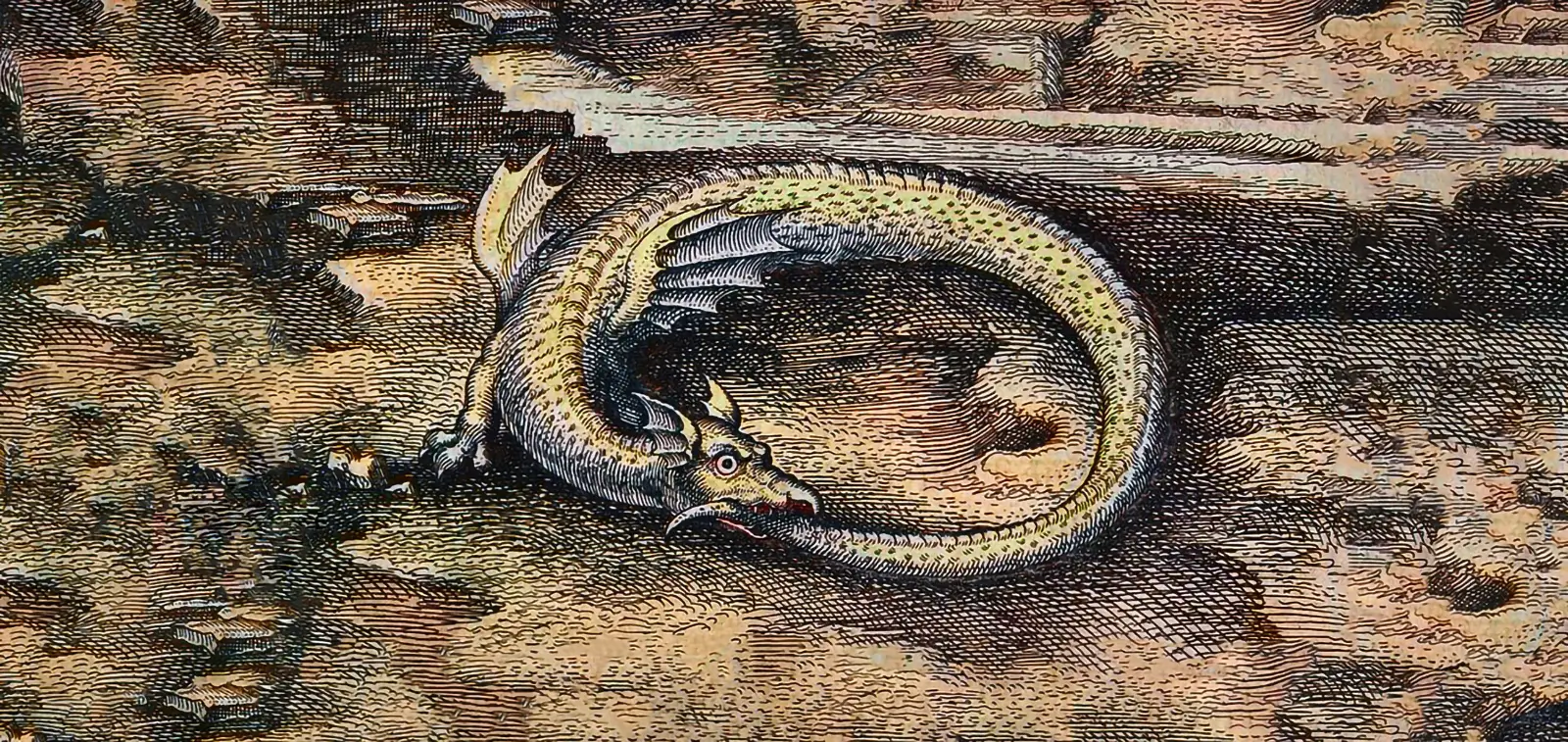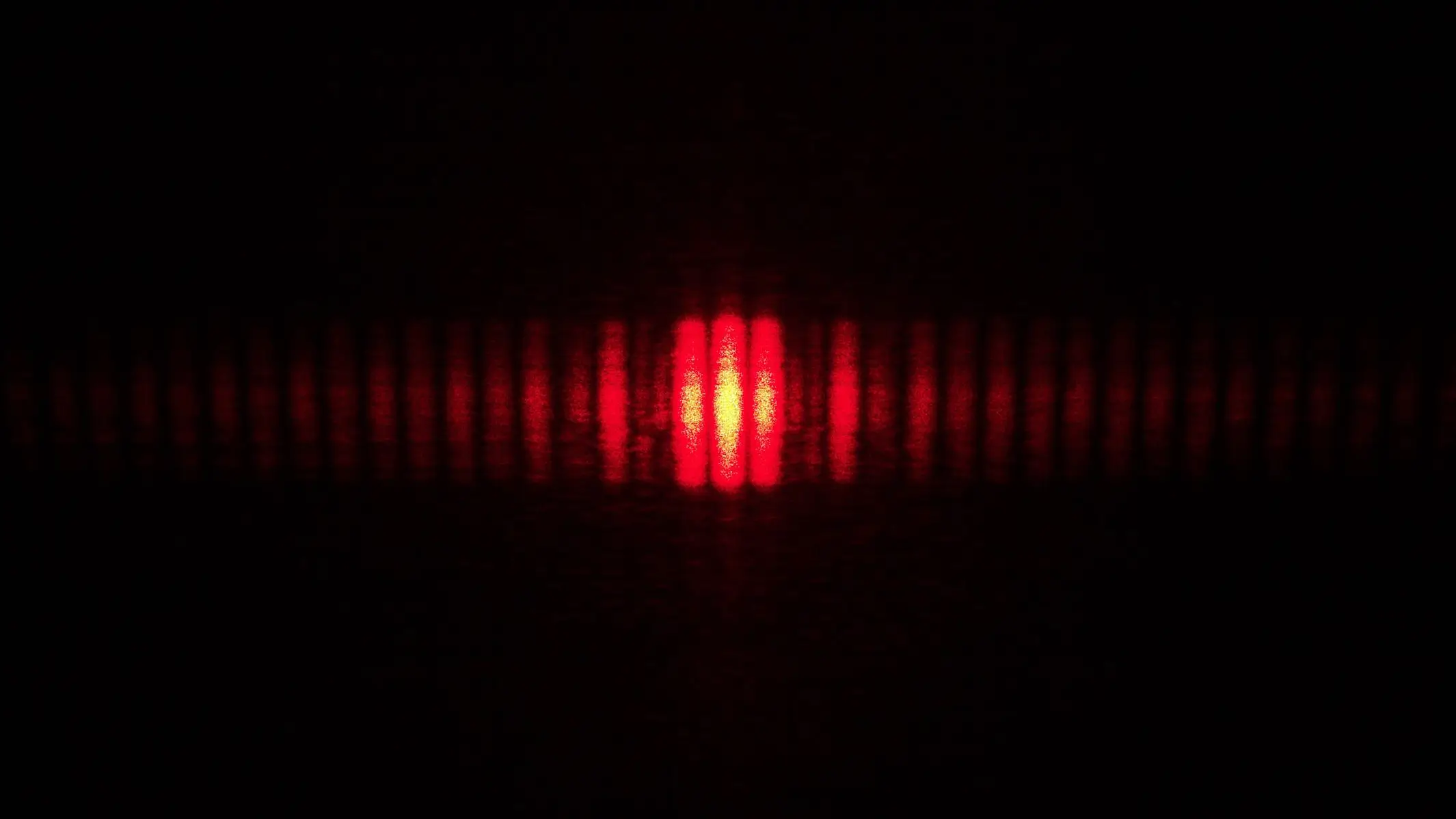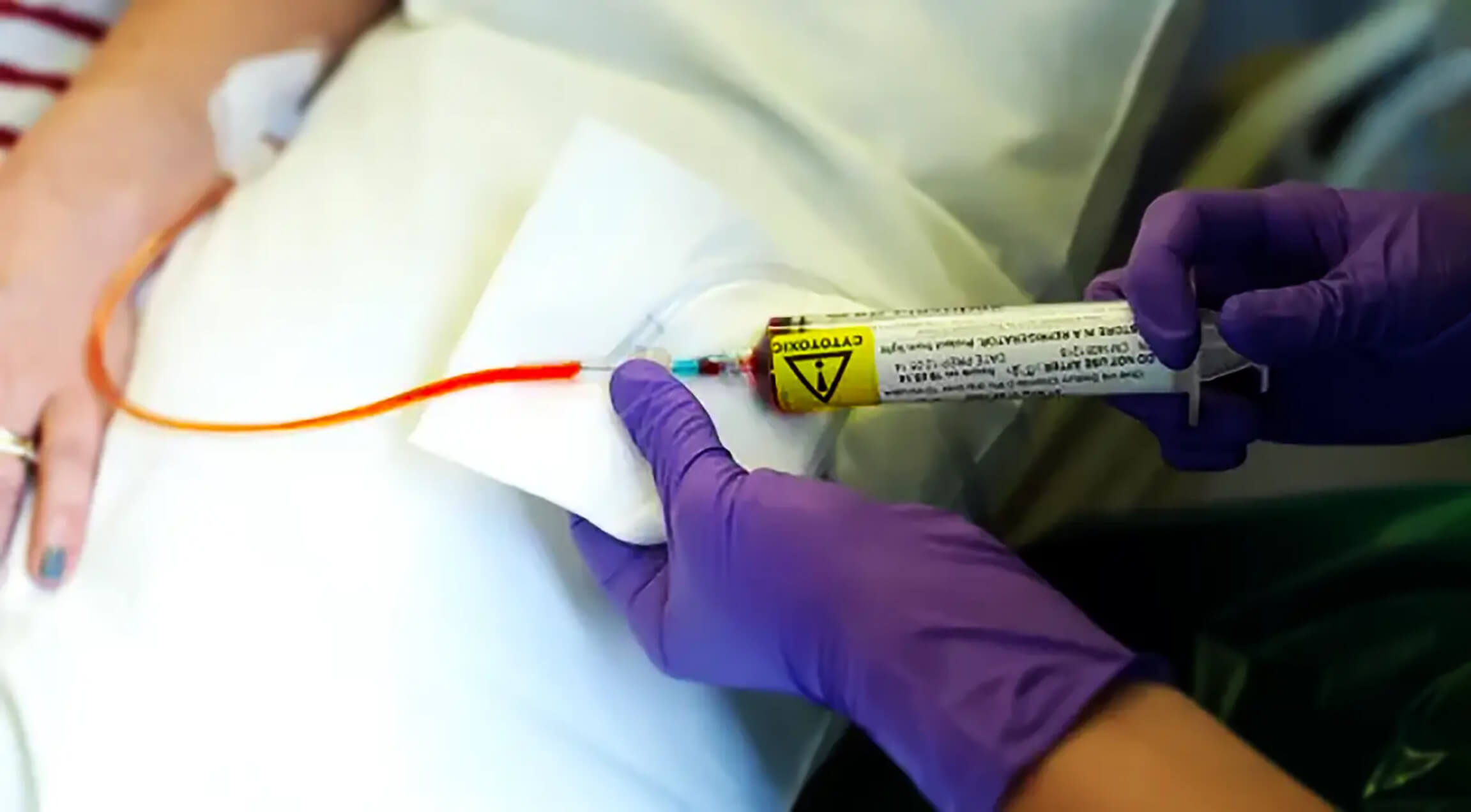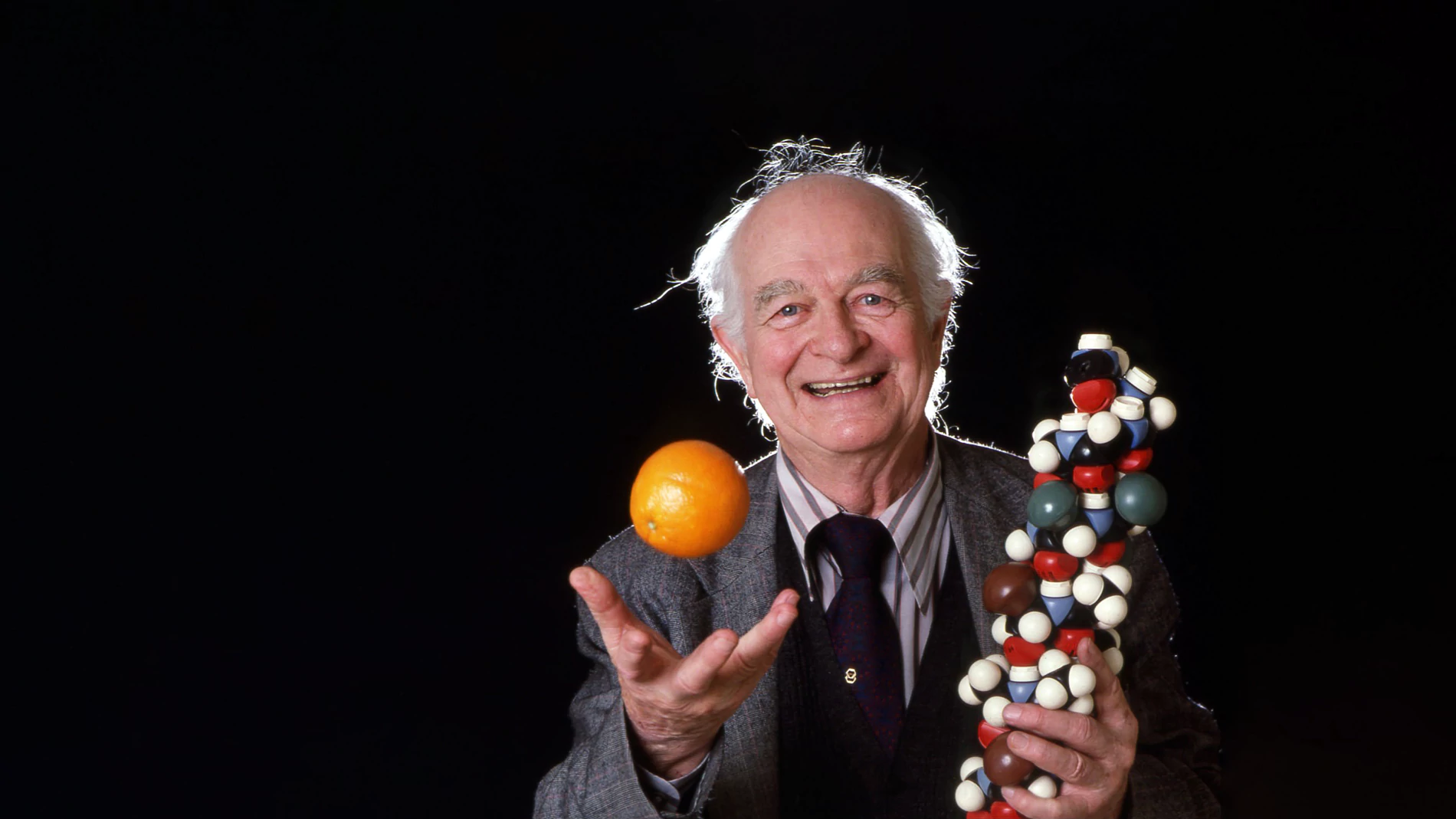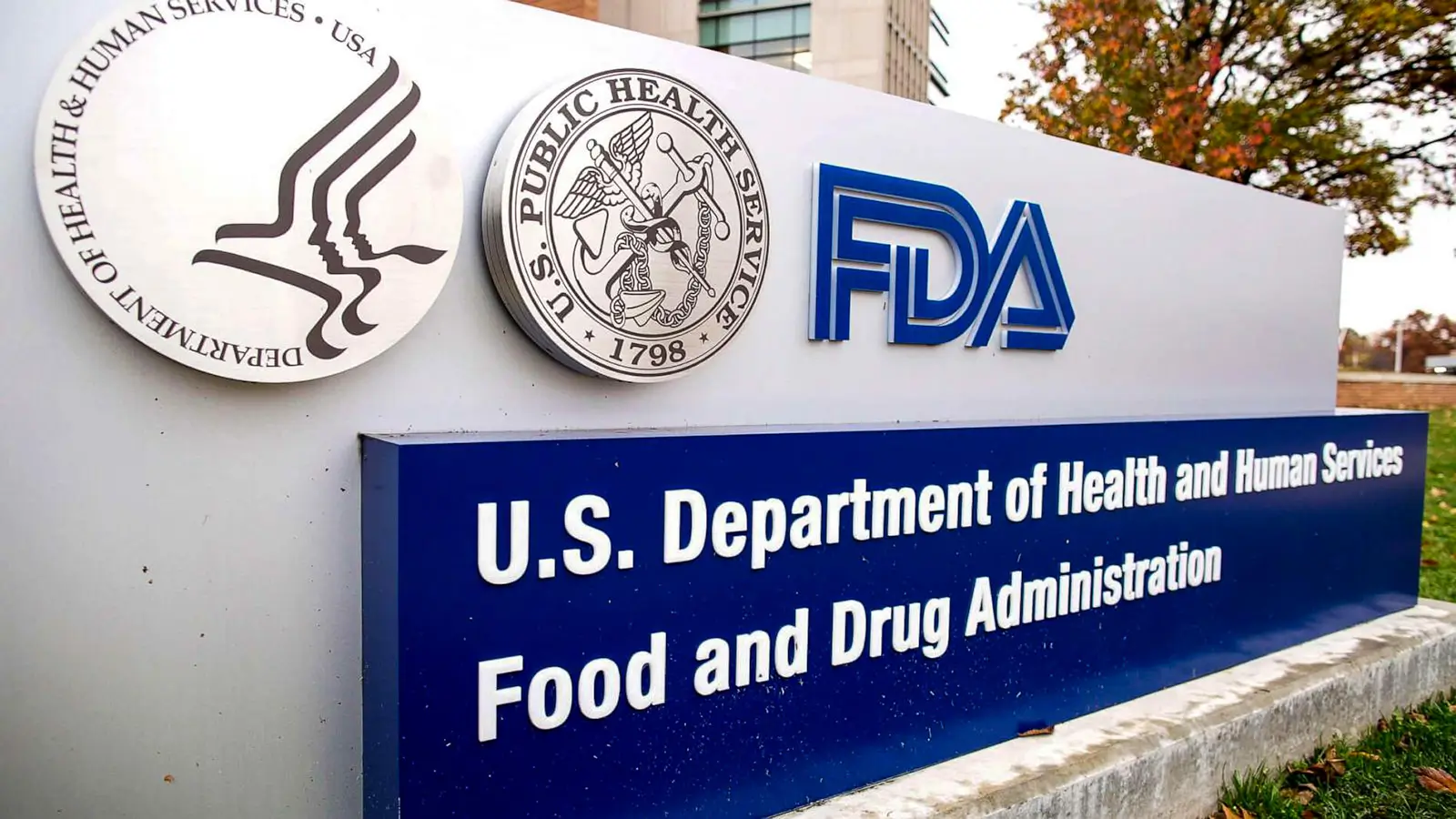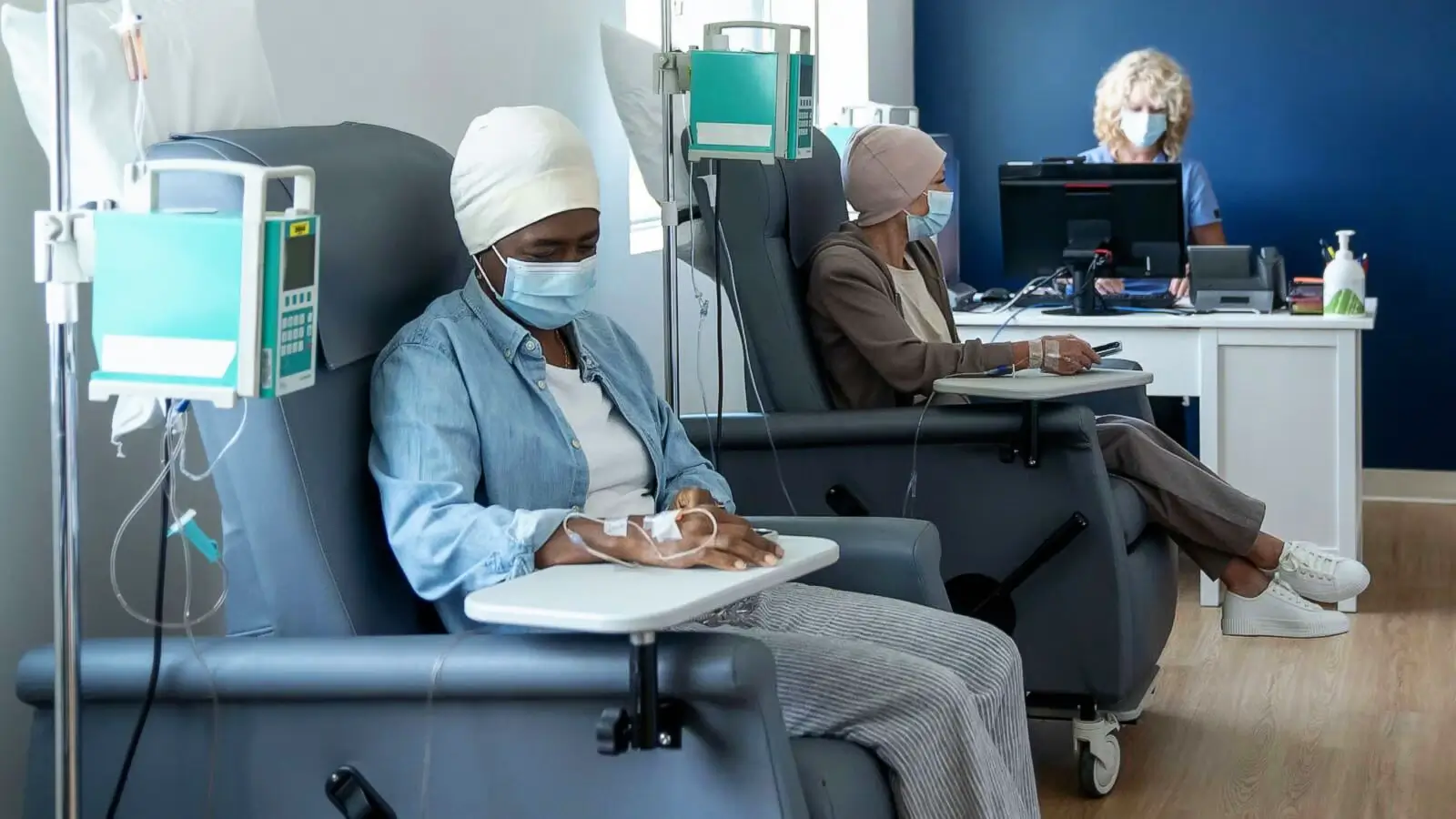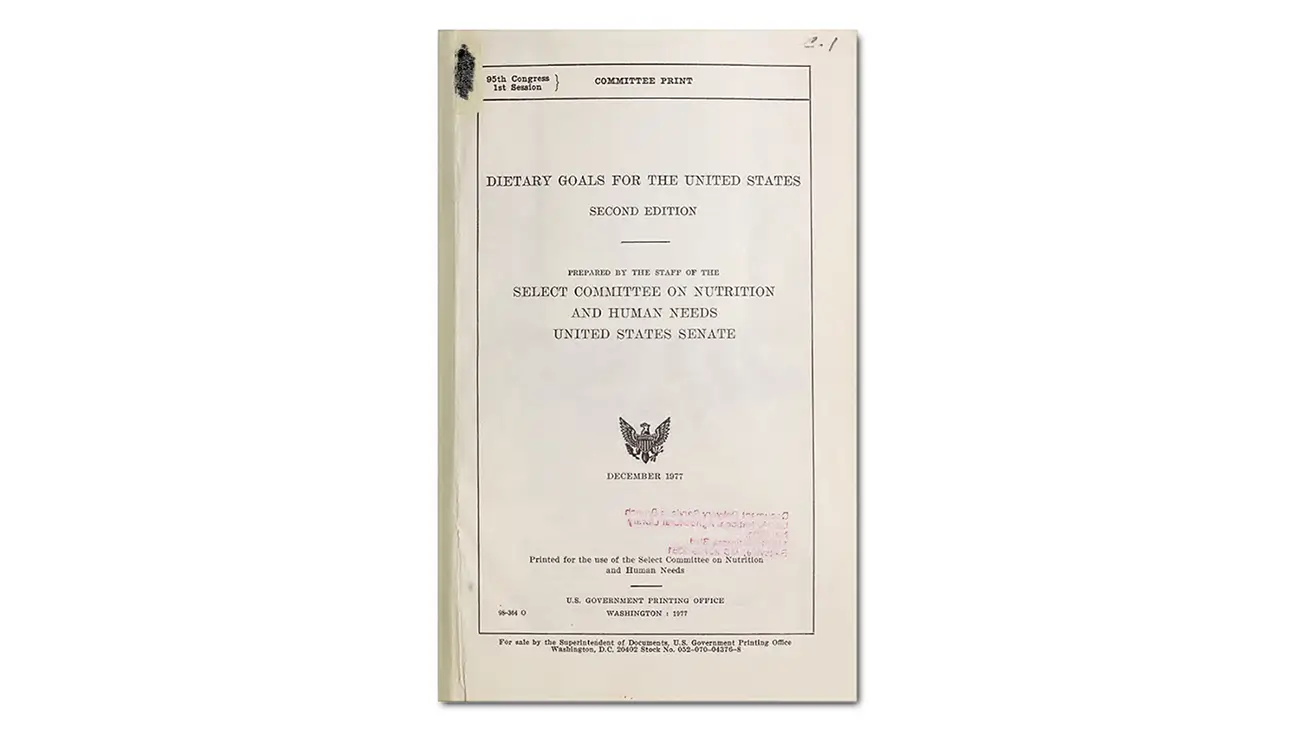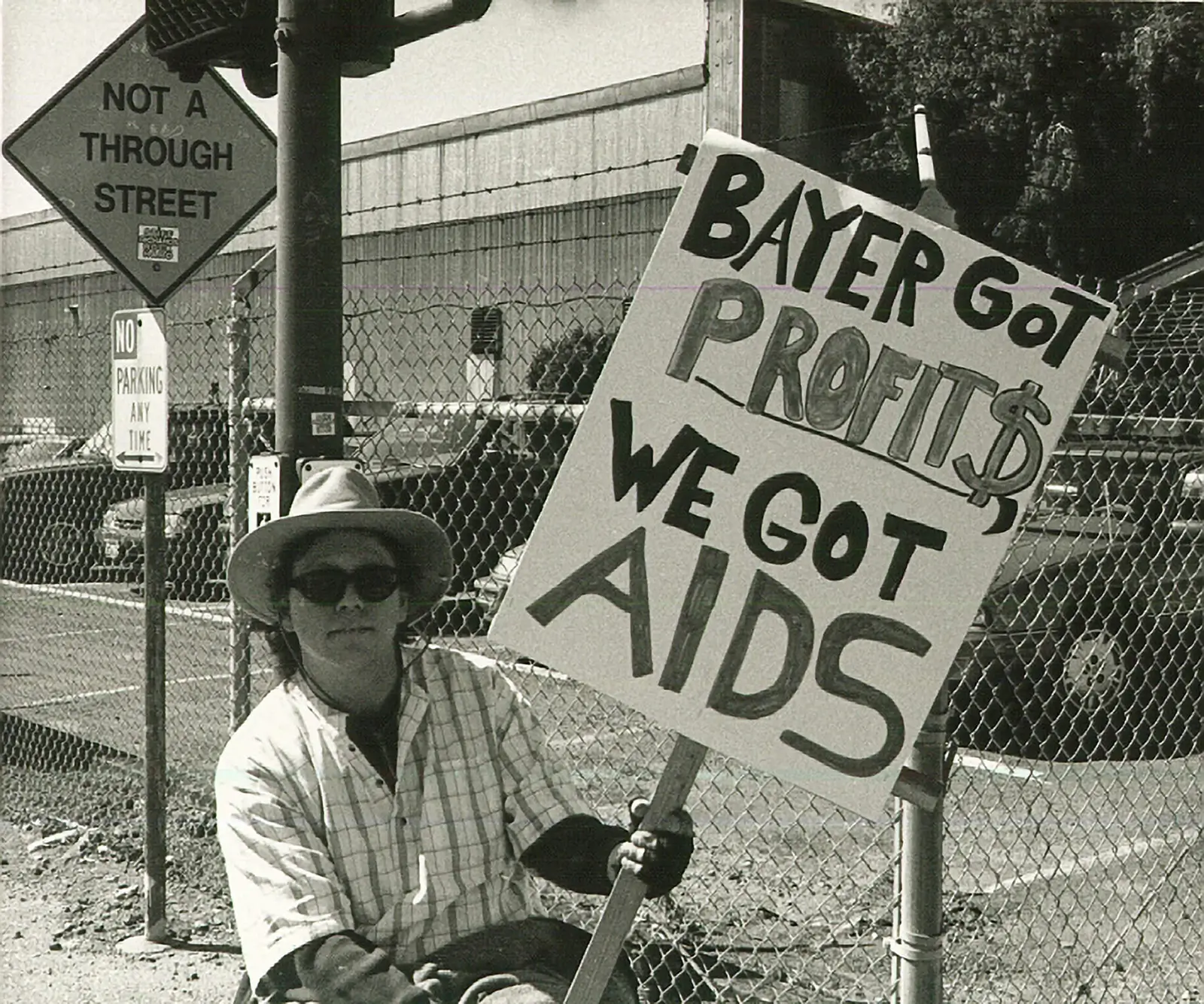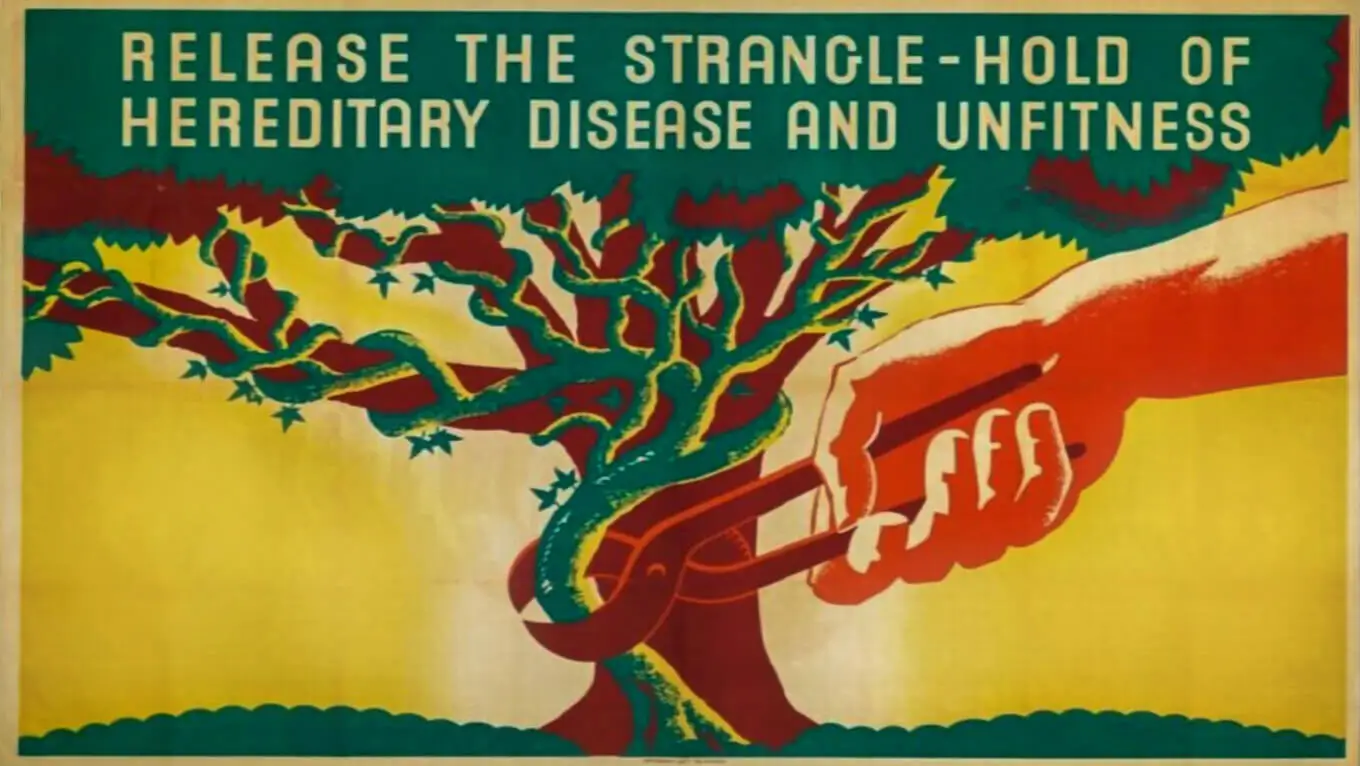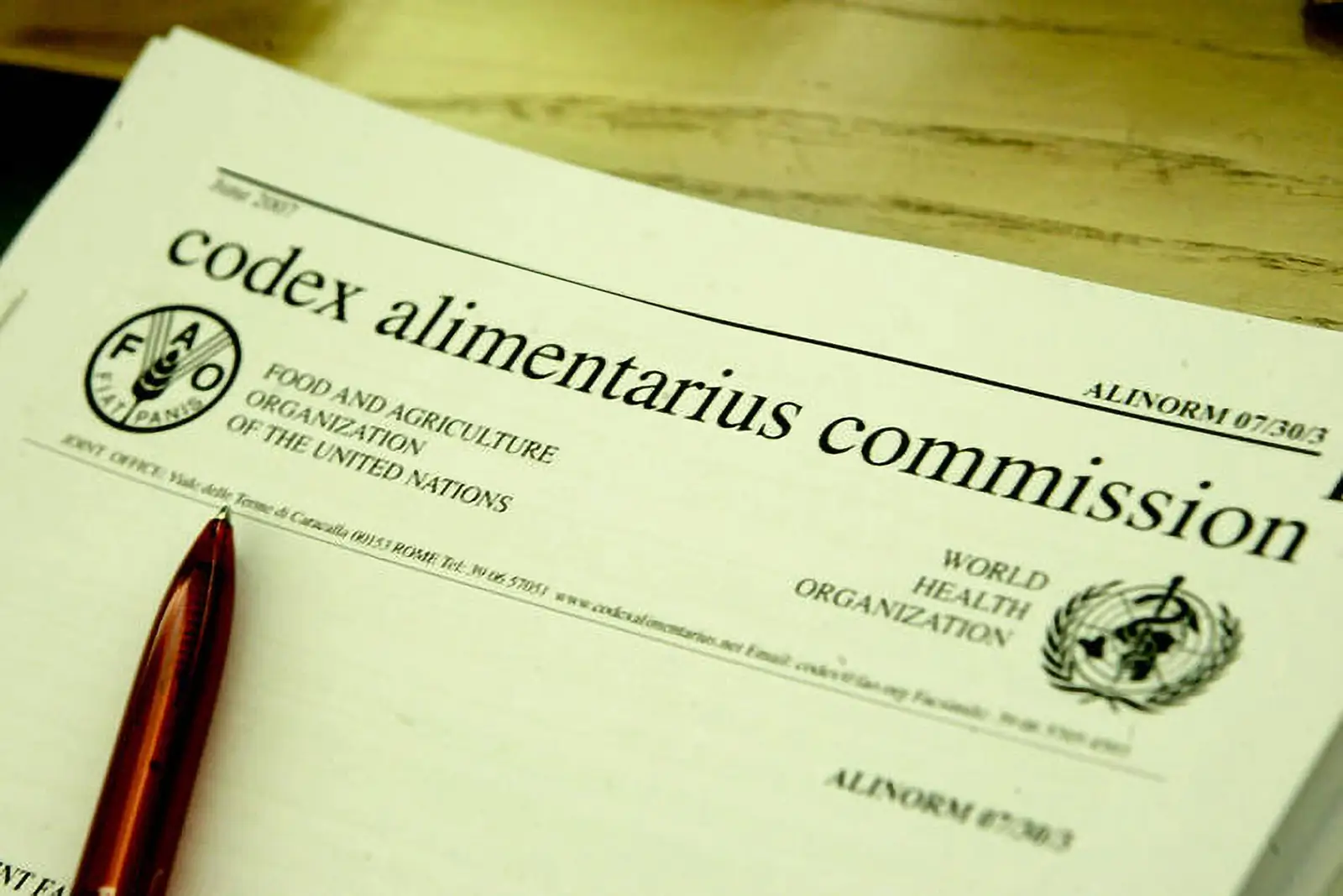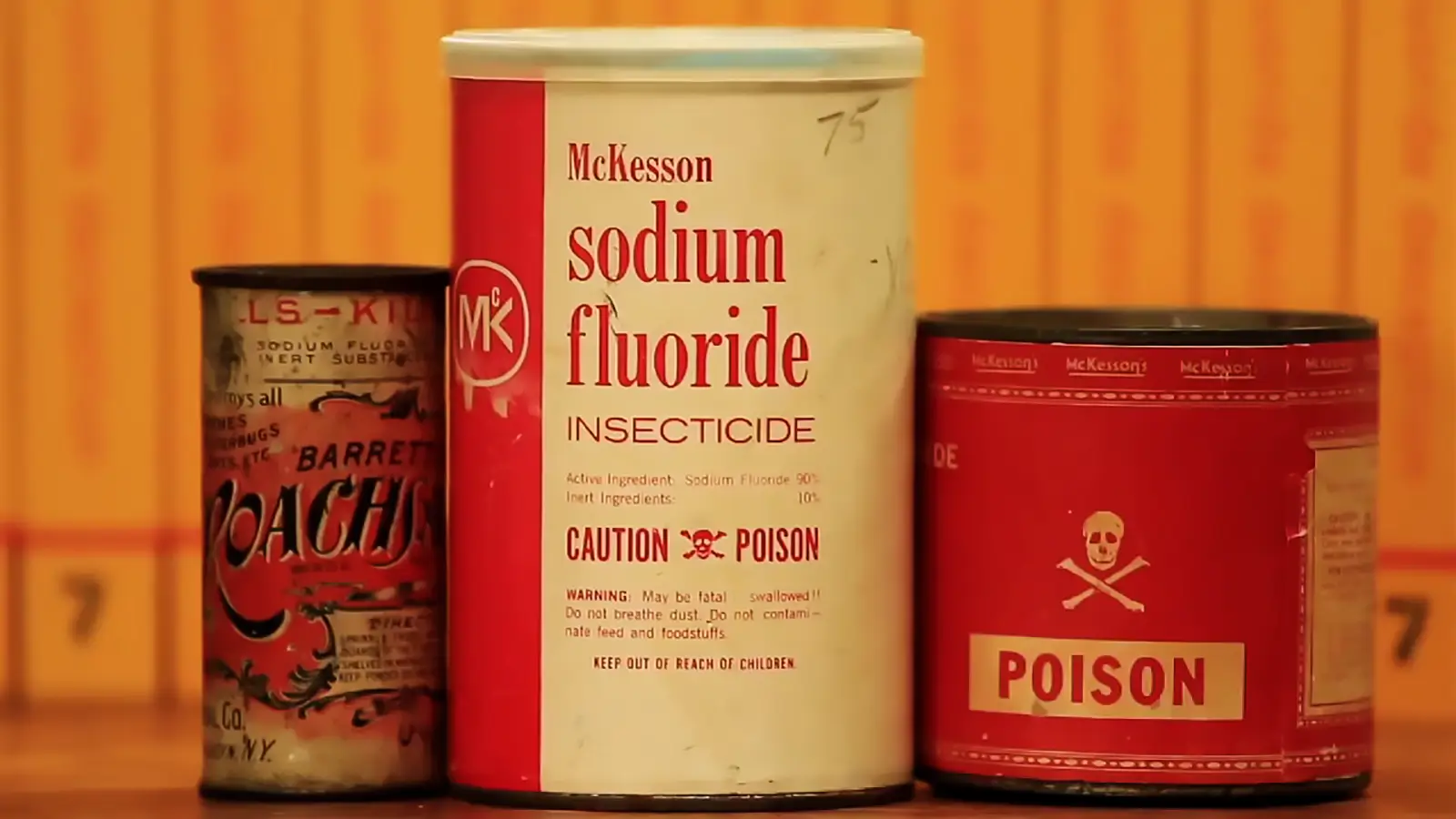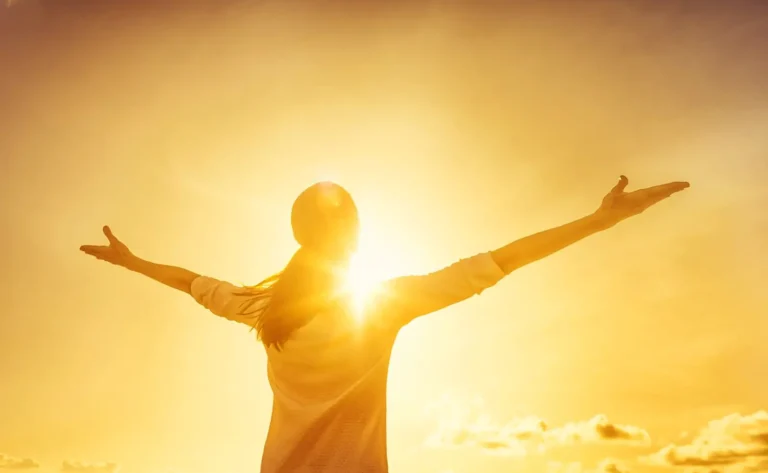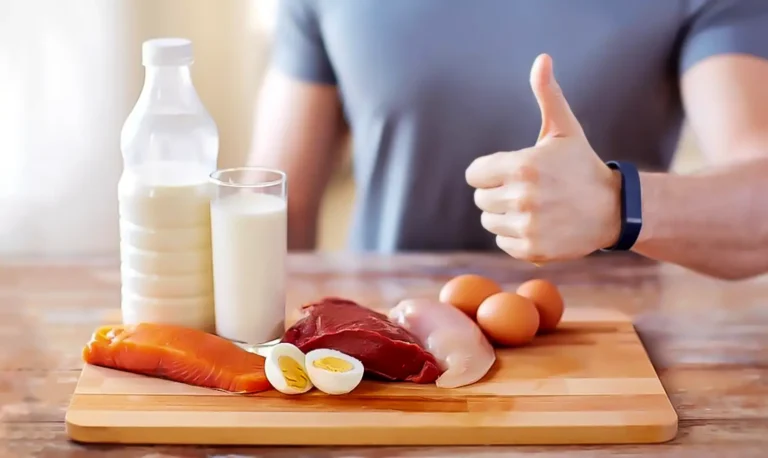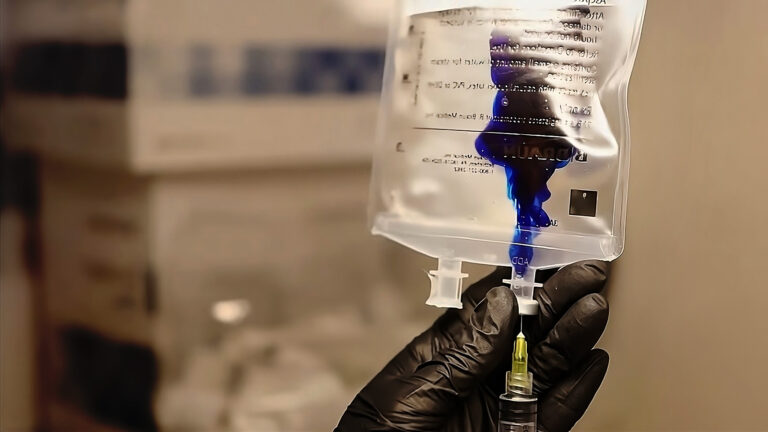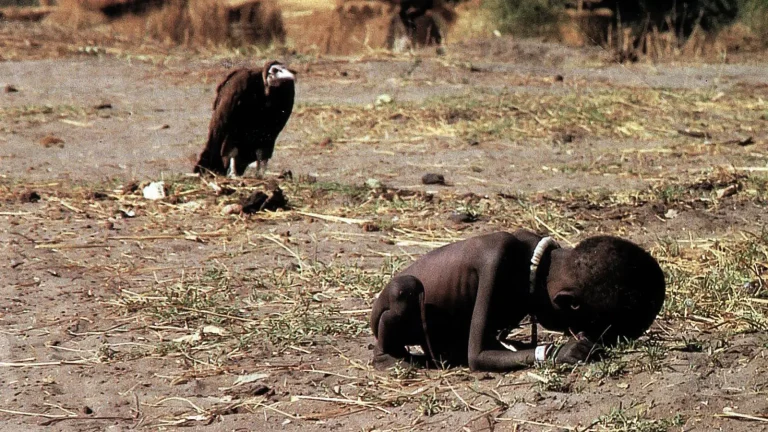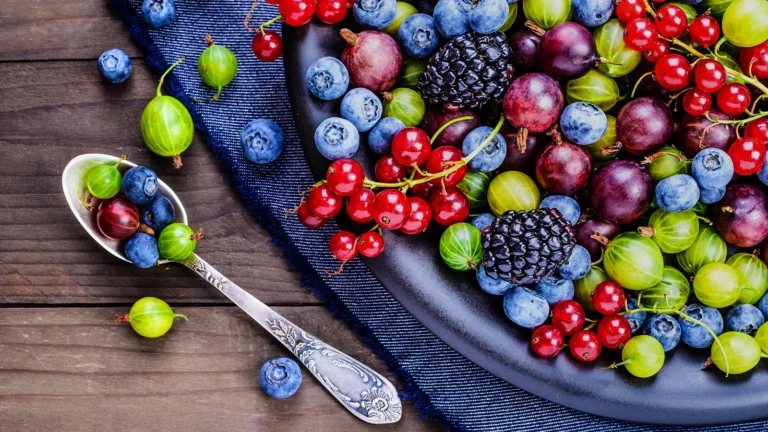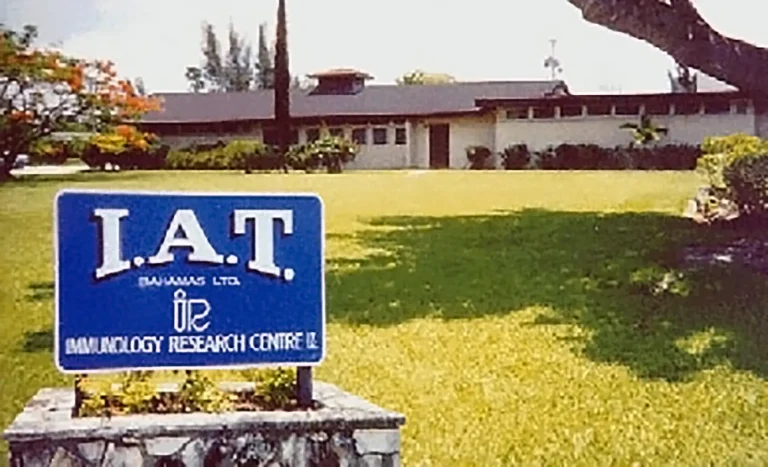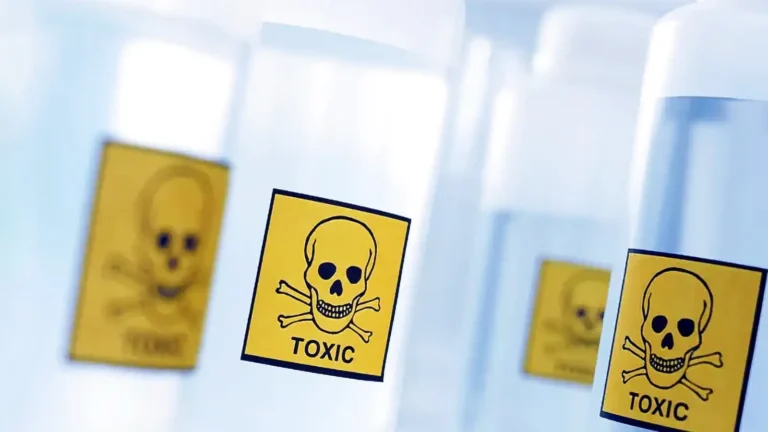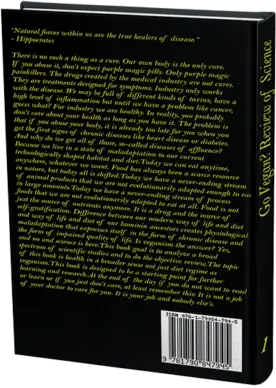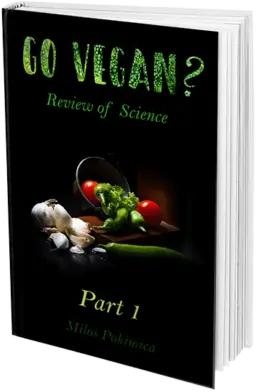Cancer, The Forbidden Cures - Thérapie Immuno-Augmentative (IAT)
Le Dr Lawrence Burton a mis au point un système (thérapie immuno-augmentatrice) qui pouvait s'attaquer aux tumeurs au début des années soixante. Puis vinrent les négociations contractuelles. Burton est devenu l'ennemi.
Milos Pokimica
Écrit par : Milos Pokimica
Examiné Médicalement Par : Dr. Xiùying Wáng, M.D.
Mis à jour le 9 juin 2023La liste des thérapies anticancéreuses qui n'ont jamais été testées par la FDA et que nous connaissons est très longue. Si la personne moyenne parcourait la litanie et lisait toutes les enquêtes du Congrès sur le cancer et lisait les audiences de 1963 sur Krebiozen ou, par exemple, les audiences de 1981 de la sénatrice Paula Hawkins de Floride qui enquêtait sur la fraude au National Cancer Institute, je pense que ce serait beaucoup de colère, d'émotions et de tumulte.
En 1986, un tollé parmi les patients atteints de cancer a forcé le Congrès à se pencher sur une autre des accusations de suppression médicale.
Le schéma était le même.
Le chercheur en cancérologie Lawrence Burton, docteur en médecine, a réussi à traiter le cancer grâce à la thérapie immuno-augmentative (IAT) qu'il a mise au point. Il a affirmé que cette thérapie pouvait contrôler toutes les formes de cancer en rétablissant les défenses immunitaires naturelles. Il s'agit d'une forme de thérapie de la ligne de vaccination pour les tumeurs où le système immunitaire est entraîné à reconnaître la tumeur. Il injectait des protéines du sérum sanguin isolées grâce à des procédés qu'il avait brevetés. L'activité du Dr Burton était centrée sur les cytokines.
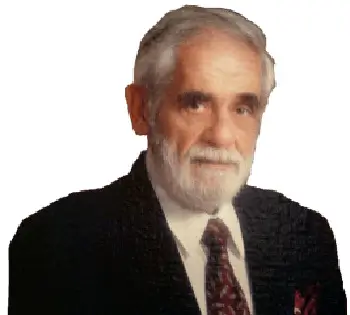
Il s'agit de protéines qui remplissent des fonctions de signalisation cellulaire au sein du système immunitaire. Certaines d'entre elles ont été appelées plus tard TNF. Il a découvert qu'elles pouvaient tuer la tumeur dans un premier temps, mais qu'avec le temps, elles cessaient d'agir. La théorie du Dr Burton était que pour éviter la toxicité dans le corps, quelque chose devait empêcher le TNF d'attaquer la tumeur. Il a émis l'hypothèse qu'il devait y avoir une protéine bloquante. Il a pensé que s'il pouvait éliminer la protéine bloquante, le TNF serait capable d'attaquer le cancer. Il a analysé plus de 3 000 patients et est arrivé à la conclusion que les patients cancéreux ont un profil distinct qui implique trop peu de protéines débloquantes et trop de protéines bloquantes. Pour vérifier sa théorie, il a prélevé chaque jour une petite quantité de sang sur le sujet afin de mesurer différents facteurs immunitaires. De nombreuses injections de plasma sanguin provenant de donneurs sont effectuées tout au long de la journée pour équilibrer les protéines. Il a été démontré que ce processus prolongeait considérablement la vie de nombreux patients atteints de maladies avancées et leur donnait une meilleure qualité de vie. Cependant, Burton n'a pas publié de rapports cliniques détaillés, n'a pas divulgué les détails de ses méthodes, n'a pas publié de statistiques significatives, n'a pas mené d'essai contrôlé et n'a pas fourni à des chercheurs indépendants des spécimens de son matériel de traitement pour qu'ils les analysent.
Il a constamment accusé un gouvernement de vouloir s'emparer de son travail et était un peu paranoïaque. Cependant, il avait probablement raison, et le schéma s'est avéré être le même.
L'Institut national du cancer l'a accusé de charlatanisme et a refusé l'enquête. Si vous demandez à l'American Cancer Society, l'existence de protéines bloquantes et débloquantes n'a pas été vérifiée et l'IAT est un traitement non prouvé.
Cependant, nous savons aujourd'hui que ce traitement est plus efficace que tout autre traitement pour certaines formes spécifiques de cancer. Pas pour tous mais pour certains, c'est extrêmement utile. Par exemple, le traitement est un succès avec le mésothéliome – cancer causé par l'amiante. Pour cette forme de cancer, la réponse est meilleure que toute autre thérapie connue dans le monde ou elle peut être utilisée en complément des traitements traditionnels.
Cependant, cela n'a pas d'importance. Il ne voulait pas vendre.
Burton a ensuite accusé le NCI d'avoir tenté illégalement d'atteindre ses méthodes. Ils viennent après lui comme ils le font toujours sous la pression, il a déménagé sa clinique aux Bahamas dans les années 1970. Et il convient également de noter que c'est grâce aux recherches du Dr Burton que le TNF (facteur de nécrose tumorale) a été découvert. Ce n'était pas un charlatan.
Le Dr Lawrence Burton a développé un système capable d'attaquer les tumeurs au début des années soixante. Au début de la recherche, il a obtenu un financement (The Damon Runyon Fund). L'American Cancer Society lui a envoyé quelqu'un pour travailler avec lui. Au cours des deux années suivantes, les recherches du Dr Burton ont prospéré et se sont développées. Invité par l'American Cancer Society à un séminaire national d'oncologues, il a fait la démonstration de ses méthodes. En 1965, Burton a fait des expériences sur des souris atteintes de tumeurs solides.
Il a été observé par le rédacteur scientifique de l'American Cancer Society lui-même, et il a été choqué par ce qu'il a vu. Il a rapporté :
“Ils ont injecté les souris et les grosseurs ont disparu sous vos yeux - une chose que je n'aurais jamais crue possible.”
L'année suivante en 1966, sous l'American Cancer Society. Le Dr Burton a comparu devant l'Académie des sciences de New York et a fait une démonstration devant 70 scientifiques et 200 rédacteurs scientifiques. Des souris ont été vaccinées avec le sérum, et quatre-vingt-dix minutes plus tard, les tumeurs avaient pratiquement disparu sous vos propres yeux, et tout cela devant 70 scientifiques. Prétendument.
Cela semble trop beau pour être vrai. Les journaux du monde entier ont publié l'histoire sur leurs premières pages tandis que les prestigieuses revues de pairs obtenaient leur histoire d'un enquêteur de Sloan-Kettering et du Dr Castle de l'American Cancer Society. L'examinateur de Los Angeles a écrit
“Guérison du cancer en quinze minutes pour les souris : l'homme sera-t-il le prochain ?.
Bulletin de Philadelphie :
“Démontré sous nos yeux que l'injection d'un mystérieux sérum... provoquait la disparition de tumeurs massives chez des souris en quelques heures.”
Cependant, le vrai remède n'est pas ce qu'ils veulent, donc la communauté médicale n'a pas approuvé. Ils ont contesté la validité du procès et ont indiqué qu'il devait être fait par une ruse.
Cinq scientifiques de haut niveau étaient tellement furieux qu'ils ont organisé une conférence de presse. Cependant, ils ont été persuadés par leurs collègues de l'annuler. Plus tard cette année-là, le Dr Burton et son associé, le Dr Friedman, ont été invités par l'Académie de médecine de New York à répéter l'expérience. Cette fois, sur seize souris cancéreuses exposées, l'assemblée réunie d'oncologues et de pathologistes a choisi laquelle d'entre elles devait recevoir les facteurs inhibiteurs de tumeurs. Pour éviter les tours de magie, ni le Dr Burton ni le Dr Friedman n'ont donné le sérum. Le résultat était le même que dans l'expérience précédente. Encore une fois trop beau pour être vrai.
Cependant, leurs précautions n'ont fait aucune différence, car une fois de plus, il a été accusé d'avoir truqué toute l'expérience.
Puis vinrent les négociations contractuelles. Les gros bonnets, NCI, Sloan-Kettering et l'American Cancer Society voulaient l'acheter à Burton.
Ils lui accorderaient des subventions et des crédits pour cela, mais ils voulaient les droits.
Burton les a refusés.
Burton est devenu l'ennemi.
Le financement s'est arrêté.
Les invitations à parler ont disparu.
Les publications ont refusé de publier.
Les attaques ont commencé.
Après avoir déménagé sa clinique, il pensait probablement qu'il était en sécurité, mais ses problèmes ne se sont pas arrêtés là. C'était une thérapie réussie et une menace pour le système de contrôle.
Lui et sa clinique devaient se rendre, peu importe s'ils ne se trouvaient pas directement sur le territoire sous le contrôle du gouvernement américain.
En 1985, CNN et tous les autres gouvernements contrôlent la propagande du déjeuner de la campagne contre la clinique.
Le sérum de Burton provenait de sang humain. Ainsi, en 1985, dans un discours du directeur adjoint de l'Institut national du cancer, il a été mentionné, comme en aparté, que les échantillons IAT de Burton contenaient le VIH. Deux familles revenant de sa clinique nous auraient rapporté 18 échantillons IAT scellés. Une banque de sang de l'État de Washington les a examinés et tous contenaient des traces d'hépatite B, tandis que certains étaient positifs au VIH. Le ministère bahamien de la santé et l'Organisation panaméricaine de la santé ont visité la clinique de Burton et, en juillet 1985, le gouvernement bahamien a fermé la clinique. Burton a rouvert sa clinique en mars de l'année suivante, mais en juillet, la FDA a émis une interdiction d'importation interdisant à quiconque d'introduire l'IAT aux États-Unis. Cette interdiction est toujours en vigueur. Et devinez quoi, la commission du Congrès a depuis fait ces constatations :
"La clinique IAT a été fermée en juillet 1985 sur la base d'une déclaration fausse et alarmante diffusée par le personnel du NCI sur un risque de sida".
Ils ont conclu que le rapport de contamination était faux.
Il est venu d'un haut fonctionnaire du NCI. Le rapport inexact a été diffusé dans le AMA Journal, les responsables de la Maison Blanche et du Département d'État. Même les familles qui avaient ramené des échantillons scellés d'IAT aux États-Unis n'ont jamais contracté l'hépatite B et n'ont jamais été testées pour être séropositives.
La fermeture de la clinique a accidentellement coïncidé avec la sortie par les États-Unis de nouveaux médicaments étonnamment similaires à ceux de Burton, comme l'interleukine-2. En conséquence, 38 membres du Congrès ont signé la demande officielle d'évaluation fédérale indépendante des thérapies ”alternatives” contre le cancer.
La réalité est qu'il existe une conspiration mondiale préméditée et bien organisée pour contrôler, abuser et maintenir le statu quo. Prévenir toute menace pour le système en trouvant le remède ou des thérapies ou des mécanismes ”alternatifs” non brevetables qui ne pourraient pas être réglementés par les institutions.
Le système comprend la FDA, le gouvernement fédéral, des parties du Congrès, les grandes sociétés pharmaceutiques, etc. La voie des affaires a été établie et ils ne laisseront personne de l'extérieur menacer leur club intérieur.
Lorsque j'ai fait mes premières recherches sur la suppression médicale, je ne pensais pas trouver grand-chose. Ce que j'ai trouvé ne m'a pas surpris, mais ce qui m'a surpris, c'est le nombre de cas. Il ne s'agit pas seulement de quelques-uns. J'arrête mes recherches vers 15 ans. J'ai perdu le testament. Ce qui m'a réprimé, c'est qu'à l'ère des technologies de l'information, il n'y a pas de véritable discussion ou connaissance à ce sujet dans la société. Ce n'est pas que 1 % des psychopathes qui dirigent cette émission font ce qu'ils font, il est surprenant que le reste de 99 % de la population soit docile. L'information est disponible, mais le niveau de compréhension est faible. La liberté d'information est la liberté de choix. Si ce cours des affaires se poursuit dans un proche avenir, l'information elle-même sera supprimée.
Références :
Passages sélectionnés à partir d'un livre : Pokimica, Milos. Devenir vegetarien? Examen de la science, partie 2. Kindle éd., Amazone, 2018.
- Moss, Ralph W. Ph.D., "L'industrie du cancer, démêler la politique", chapitre 12 : "Méthode immunologique de Burton", Paragon House, 1996
- Burton, Lawrence, et al., "La purification et l'action du facteur tumoral extrait de la souris et du tissu néoplasique humain", Transactions de l'Académie des sciences de New York, 21: 700-707, juin 1959.
- Pelton, Ross et Lee Overholser, « Alternatives dans le traitement du cancer : le guide complet des traitements non traditionnels ». Chapitre 22, "Thérapie immuno-augmentative", New York: Fireside, 1994
- "Série des meilleurs cas pour l'utilisation de la thérapie d'immuno-augmentation et de la naltrexone pour le traitement du cancer. Résumé." Evidence Report/Technology Assessment : n° 7. Publication AHRQ n° 03-E029. avril 2003.
- The Burton Goldberg Group, Alternative Medicine, The Definitive Guide, « Immuno-Augmentative Therapy (IAT) », pages 576-577, Future Medicine Publishing, 1993
ORGANISATIONS
IAT – Immune Augmentation Therapy Non-Toxic Cancer Immunotherapy Téléphone sans frais aux États-Unis et au Canada : 561-766-0878 quantimmuno@gmail.com www.immunetherapy.net
604 East Street - P.O. Box 10 Otho, Iowa 50569 USA 515-972-4444 Fax : 515-972-4415 info@PeopleAgainstCancer.org www.peopleagainstcancer.org
Articles Similaires
Vous avez des questions sur la nutrition et la santé ?
J'aimerais avoir de vos nouvelles et y répondre dans mon prochain post. J'apprécie votre contribution et votre opinion et j'ai hâte d'avoir de vos nouvelles bientôt. Je vous invite également à nous suivre sur Facebook, Instagram et Pinterest pour plus de contenu sur l'alimentation, la nutrition et la santé. Vous pouvez y laisser un commentaire et entrer en contact avec d'autres passionnés de santé, partager vos conseils et expériences, et obtenir le soutien et les encouragements de notre équipe et de notre communauté.
J'espère que ce billet a été instructif et agréable pour vous et que vous êtes prêt à mettre en pratique les connaissances que vous avez acquises. Si vous avez trouvé ce billet utile, veuillez le partager à vos amis et à votre famille qui pourraient également en bénéficier. On ne sait jamais qui peut avoir besoin de conseils et de soutien dans son parcours de santé.
– Vous pourriez aussi aimer –

Apprendre la Nutrition
Milos Pokimica est docteur en médecine naturelle, nutritionniste clinique, rédacteur en santé médicale et nutrition et conseiller en sciences nutritionnelles. Auteur de la série de livres Devenir vegetarien ? Examen des sciences, il exploite également le site Web de santé naturelle GoVeganWay.com
Avis de non-responsabilité médicale
GoVeganWay.com vous propose des critiques des dernières recherches liées à la nutrition et à la santé. Les informations fournies représentent l'opinion personnelle de l'auteur et ne sont pas destinées ni implicitement à remplacer un avis médical professionnel, un diagnostic ou un traitement. Les informations fournies sont fournies à titre informatif uniquement et ne sont pas destinées à remplacer la consultation, le diagnostic et/ou le traitement médical d'un médecin ou d'un prestataire de soins de santé qualifié.NE JAMAIS IGNORER LES CONSEILS MÉDICAUX PROFESSIONNELS OU RETARDER LA RECHERCHE DE SOINS MÉDICAUX EN RAISON DE QUELQUE CHOSE QUE VOUS AVEZ LU OU ACCÉDÉ SUR GoVeganWay.com
N'APPLIQUEZ JAMAIS DE CHANGEMENTS AU STYLE DE VIE OU TOUT CHANGEMENT À LA SUITE DE QUELQUE CHOSE QUE VOUS AVEZ LU SUR GoVeganWay.com AVANT DE CONSULTER UN PRATICIEN MÉDICAL AGRÉÉ.
En cas d'urgence médicale, appelez immédiatement un médecin ou le 911. GoVeganWay.com ne recommande ni n'approuve aucun groupe, organisation, test, médecin, produit, procédure, opinion ou autre information spécifique pouvant être mentionné à l'intérieur.
Choix de l'éditeur -
Milos Pokimica est rédacteur spécialisé dans la santé et la nutrition et conseiller en sciences nutritionnelles. Auteur d'une série de livres Devenir vegetarien ? Examen des sciences, il exploite également le site Web de santé naturelle GoVeganWay.com
Derniers articles –
Top Des Nouvelles Sur la Santé - ScienceDaily
- Scientists find dark chocolate ingredient that slows agingle décembre 12, 2025
Scientists have uncovered a surprising link between dark chocolate and slower aging. A natural cocoa compound called theobromine was found in higher levels among people who appeared biologically younger than their real age.
- Nerve injuries can trigger hidden immune changes throughout the entire bodyle décembre 12, 2025
Researchers discovered that nerve injuries can alter the immune system throughout the body, and males and females react very differently. Male mice showed strong inflammatory responses, while females showed none, yet both transmitted pain-inducing signals through their blood. These findings reveal previously unknown pathways driving pain, especially in females. The work points toward new opportunities for personalized chronic pain therapies.
- NAD+ supplement shows early promise for long COVID fatigue and brain fogle décembre 12, 2025
Long COVID still affects people worldwide with stubborn symptoms like fatigue and cognitive issues. A clinical trial tested whether boosting NAD+ using nicotinamide riboside could help. Although overall group differences were limited, many participants showed encouraging improvements after taking NR for at least 10 weeks. The findings suggest NAD+ enhancement may offer symptom relief for some individuals.
- Stressed rats keep returning to cannabis and scientists know whyle décembre 11, 2025
Rats with naturally high stress levels were far more likely to self-administer cannabis when given access. Behavioral testing showed that baseline stress hormones were the strongest predictor of cannabis-seeking behavior. Lower cognitive flexibility and low endocannabinoid levels also contributed to increased use. The results hint at possible early indicators of vulnerability to drug misuse.
- Even moderate drinking carries a bigger cancer risk than you thinkle décembre 11, 2025
Researchers found that both how often and how much someone drinks significantly shape their cancer risk, even at moderate levels. Vulnerability varies across groups, with genetics, socioeconomic status, obesity, and lifestyle behaviors amplifying harm. The review also uncovered gender differences, beverage-specific risks, and biological pathways that intensify cancer development.
- Scientists uncover a hidden protein behind deadly mystery diseasesle décembre 11, 2025
Scientists discovered that the protein RPA plays a critical and previously unconfirmed role in stimulating telomerase to maintain long, healthy telomeres. When RPA malfunctions, telomeres can shorten dangerously, leading to serious diseases.
- Gene-edited CAR-T cells erase aggressive T-cell leukemiale décembre 11, 2025
A cutting-edge therapy using base-edited immune cells is offering a major breakthrough for patients with one of the toughest forms of blood cancer, T-cell acute lymphoblastic leukaemia. By precisely rewriting tiny sections of DNA, scientists at UCL and Great Ormond Street Hospital created universal CAR T-cells capable of targeting the cancer without harming themselves—a long-standing challenge in T-cell–based therapies. Early trial results show deep, long-lasting remissions, including in […]
PubMed, #régime-vegan –
- Healthful and Unhealthful Plant-Based Diets and Their Association with Cardiometabolic Targets in Women Diagnosed with Breast Cancer: A Cross-Sectional Analysis of a Lifestyle Trialle décembre 11, 2025
CONCLUSIONS: Maintaining cardiometabolic risk factors within normal ranges is clinically relevant in BCS, and this may be more likely when a plant-based diet is consumed, especially if low in unhealthy plant foods.
- Dietary and Lifestyle Patterns and Their Associations with Cardiovascular and Inflammatory Biomarkers in Vegans, Vegetarians, Pescatarians, and Omnivores: A Cross-Sectional Studyle décembre 11, 2025
Background: Plant-based diets are associated with reduced cardiometabolic risk, yet the influence of lifestyle behaviors on these benefits remains insufficiently understood. Objective: To assess the combined impact of dietary patterns and lifestyle behaviors on body composition, lipid profiles, and inflammatory biomarkers in healthy young adults. Methods: In this cross-sectional study, 155 participants aged 18-39 years were categorized into four dietary groups: vegans (n = 48), vegetarians (n […]
- Functional and Nutritional Properties of Lion’s Mane Mushrooms in Oat-Based Desserts for Dysphagia and Healthy Ageingle décembre 11, 2025
Hericium erinaceus (Lion’s Mane mushroom) is a medicinal species recognised for its neuroprotective and antioxidant properties. This study investigated its potential as a functional ingredient in oat milk-based desserts formulated for individuals with dysphagia. Freeze-dried Lion’s Mane powder (LMP), containing high-quality protein (~16%, amino acid score 88%), dietary fibre (~31%), and phenolic compounds (72.15 mg GAE/g), was incorporated at varying levels using gelatin or iota-carrageenan […]
- “A football team with no midfield”: A qualitative analysis of anti-vegan stigma in Italyle décembre 7, 2025
A growing body of research has demonstrated the prevalence of unfavourable attitudes towards individuals who adhere to a vegan diet and has provided empirical evidence to support the existence of an anti-vegan ideology. The present study aims to contribute to extant knowledge by examining the social perception of veganism and vegans in Italy. Italy is a nation characterised by a traditional culture of food that serves as a significant catalyst for collective identification and national pride….
- Plant-based dietary index on the Mediterranean and a vegan diet: a secondary analysis of a randomized, cross-over trialle décembre 5, 2025
CONCLUSION: These findings suggest that, replacing animal products even with the “unhealthful” plant-based foods on a vegan diet was associated with weight loss.
Messages aléatoires –
Postes en vedette -

Dernières Nouvelles de PubMed, #alimentation végétale –
- Bioactive Nutritional Components Within the Planetary Health Diet for Preventing Sarcopenic Obesity and Diabetic Sarcopenia: A Systematic Reviewpar Lia Elvina le décembre 11, 2025
CONCLUSIONS: PHD-aligned foods combining plant proteins, polyphenols, and fermented products strengthen nutrient sensing, mitochondrial efficiency, and cellular resilience, representing a sustainable nutritional framework for preventing and managing SO and DS.
- Ultra-Processed Foods Consumption, Mediterranean Diet Adherence and Sociodemographic Correlates in an Italian Adult Population: The UFO Surveypar Emilia Ruggiero le décembre 11, 2025
Background: Although national surveys report increasing ultra-processed foods (UPFs) consumption, updated estimates for Italy are lacking. Given the central role of the Mediterranean Diet (MD), understanding how UPFs contribute to the contemporary Italian diet is essential. This study quantified UPF intake in a convenience sample of Italian adults and examined its main sociodemographic correlates, including MD adherence. Methods: A web-based cross-sectional survey was conducted among Italian…
- High-Salt Diets, Intestinal Barrier, and Hypertension: A Mechanistic Review and the Promise of Dietary Therapypar Wenhao Si le décembre 11, 2025
Hypertension is a major public health problem worldwide, and high-salt diets are one of the main causes of hypertension. The intestinal mucosal immune system is the largest immune organ in vertebrates. Hypertension was associated with increased intestinal permeability and an inflammatory state. The bacterial communities attached to the intestinal mucosa played a significant role in the development and maturation of the autoimmune system, as well as inflammation and immunity to disease. In […]
- Health-Promoting Potential of the Mediterranean Diet and Challenges for Its Application in Aging Populationspar Marta Cianciabella le décembre 11, 2025
The Mediterranean Diet (MD) is a lifestyle that involves not only dietary habits, well known for their effectiveness in preventing health risks by supplying well-balanced foods rich in bioactive compounds, but also daily habits that improve the quality of life. Older adults represent a segment of the population that can particularly benefit from this dietary pattern. However, the specific characteristics and needs of older individuals require a critical analysis of aspects that may limit…
- Association of Mediterranean Diet Scores with Psychological Distress in Pregnancy: The Japan Environment and Children’s Studypar Yuri Takahashi le décembre 11, 2025
Background/Objectives: Perinatal mental disorders are important health issues that affect both mothers and their children. The Mediterranean diet (MD) is one of the most well-recognized healthy dietary patterns worldwide. Recent evidence suggests that MD may prevent or reduce the risk of perinatal mental disorders. This study investigated the association between MD adherence during pregnancy and psychological distress in a large cohort of Japanese births. Methods: Data were obtained from […]
- Protective Role of Ginsenoside F1-Enriched Extract (SGB121) in Metabolic Dysfunction-Associated Fatty Liver Disease (MAFLD)par Bo Yoon Chang le décembre 11, 2025
Introduction/Objectives: Ginsenoside F1, a pharmacologically active saponin derived from Panax ginseng, exhibits diverse bioactivities, but its use is limited because it is difficult to purify and has high production costs. To overcome these challenges, a ginsenoside F1-enriched extract named SGB121 was developed. This study aimed to evaluate the therapeutic efficacy of SGB121 in a high-fat, high-carbohydrate (HFHC) diet-induced metabolic dysfunction-associated fatty liver disease (MAFLD) […]


